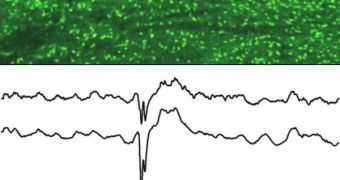According to a new scientific study, it may be that conditions such as epilepsy (a disease of the brain) and heart arrhythmia (irregular beats of the heart) may have a single molecular root problem. Misfiring electrical signals cause both these afflictions, and researchers say that the newly found knowledge may help doctors and researchers reduce the numbers of young people that die following seizures. Unfortunately, this is not at all uncommon, ScienceNow reports.
In cellular membranes, action potentials are set across their surface via potassium ion channels. These pathways are built by the KCNQ gene. In their investigation, experts at the Baylor College of Medicine, in Houston, Texas, were looking at possible mutations of this gene. One of the alterations apparently caused the production of a protein that delayed the restoration of the action potential in the membranes. When the heart beats, for example, the KCNQ gene is responsible for resetting the action potentials, so that the next beat comes in time, and in rhythm.
Experts have believed for a long time that the ion channels are only active in heart tissues, but a team of BCM experts, led by neurologist Alica Goldman, has now uncovered the first clear evidence that the mechanism is at work in mouse neurons as well. In a paper appearing in the latest issue of the respected journal Science Translational Medicine, the scientists report that the ion channels were especially active in areas of the brain that had been linked to seizures in previous investigations.
When they analyzed the mice using both electrocardiogram (EKG) and electroencephalogram (EEG) monitoring, the researchers noticed that, most of the times, the seizures were also accompanied by irregular heart rhythms, which essentially meant that the brain and the heart misfired together. Neurologist Jeffrey Noebels, the lead author of the new paper, says that the find is very exciting, because it offers the first definitive proof that potassium ion channels underlie epilepsy and arrhythmia.

 14 DAY TRIAL //
14 DAY TRIAL //